To prevent accidents and improve worker safety at construction sites, Georgia Tech researchers created the AwareSite Proximity Safety Sensing System, providing smart Internet of Things (IoT) functionality for a greatly enhanced alert system. The system uses wearable personal protection units (PPUs) that can be attached to workers’ wrists or clothing and equipment protection units (EPUs) attached to the equipment itself. These sensors detect and warn pedestrian workers and equipment operators with vibrating, audible, and visual alerts whenever a proximity breach has occurred, making the system highly effective in a construction site’s noisy and harsh environment.
A central server controls the devices and collects sensor data, which is accessed via a Web user interface (UI), enabling construction site managers to monitor, in real time, worker status and location, PPU usage, and proximity breach analytics. This data can improve management’s ability to predict and take better preventive actions at the current job site and in the future.
- Improved work safety and efficiency: Not only are accidents prevented when workers and equipment operators are alerted that they are crossing set safety boundaries, their proximity and movement data are also stored in the cloud and can be used to analyze work patterns that could improve safety, work process efficiency, and more.
- Low-cost and flexible hardware: The system uses inexpensive custom PPU devices but can also be paired with workers’ personal smartphones for connecting to the system.
- User friendly and reliable: System setup and operation is simple. Beacons use Bluetooth® low-energy technology and can last more than one year without changing batteries.
- Reliable signals: Built-in communication redundancy ensures that safety alerts are always able to reach the intended devices in a timely manner.
- Robust data: Devices can identify worker actions, such as standing, sitting, bending, and walking, to measure productivity as well as safe or unsafe activities. Worker location information is integrated with computer-aided design (CAD) drawings of the work site and accessible through the UI.
- Broad coverage: System uses a THREAD® network with a communication range of about 100 meters, making it ideal for large construction sites.
- Minimal interference: A custom algorithm enhances the Bluetooth functionality by overcoming delays and other reliability issues that are frequently seen when similar capabilities are deployed in environments that use many types of heavy equipment.
This system can improve safety in any field where pedestrian workers are interacting with heavy equipment, including:
- Construction sites
- Factories
- Warehouses
Construction industry work environments are dangerous, with close interactions between pedestrian workers and construction equipment that can lead to lost productivity, accidents, injuries, and even deaths. Approximately one-fourth of all construction fatalities over the past decade have been caused by visibility-related issues, a majority of which involve construction equipment and pedestrian workers. A proximity sensing and alerting system is needed, but existing active systems are not widely adopted because they are complex and have poor accuracy, excessive nuisance alerts, difficult setup, and large size/weight, among other issues.
How It Works
Georgia Tech’s AwareSite system consists of three types of hardware: Bluetooth low-energy beacons, EPUs, and PPUs. Each EPU and PPU includes an ultra-low power multiprotocol system-on-module circuit, which is used as the controller. The controller senses the signal strength from the beacons attached to the equipment, estimates the proximity, and communicates that information to other devices or to a cloud server via THREAD, Zigbee™, and Bluetooth 5 communication protocols. The PPU and EPU devices also have embedded inertial measurement units (IMUs) and Global Positioning System (GPS) technology for identifying the current behavior and location of a worker.
The beacons are attached to the equipment and broadcast a Bluetooth signal. The PPU receives the signal and calculates the worker’s distance from the beacon. When the measured distance is below the predetermined reference distance, the PPU recognizes it as a hazard situation and activates the alarm to warn the pedestrian workers and the equipment operators.
The system network uses the THREAD low-power mesh networking technology, which has a communication range of about 100 meters. If a device is out of the network and is not able to send information to the cloud server, it stores the data on a memory card and sends it to the server when it is reconnected. The devices use minimal power to enhance the battery life.
Bluetooth is a registered trademark of Bluetooth SIG, Inc.
THREAD is a registered trademark of Thread Group.
Zigbee is a trademark of the Zigbee Alliance.
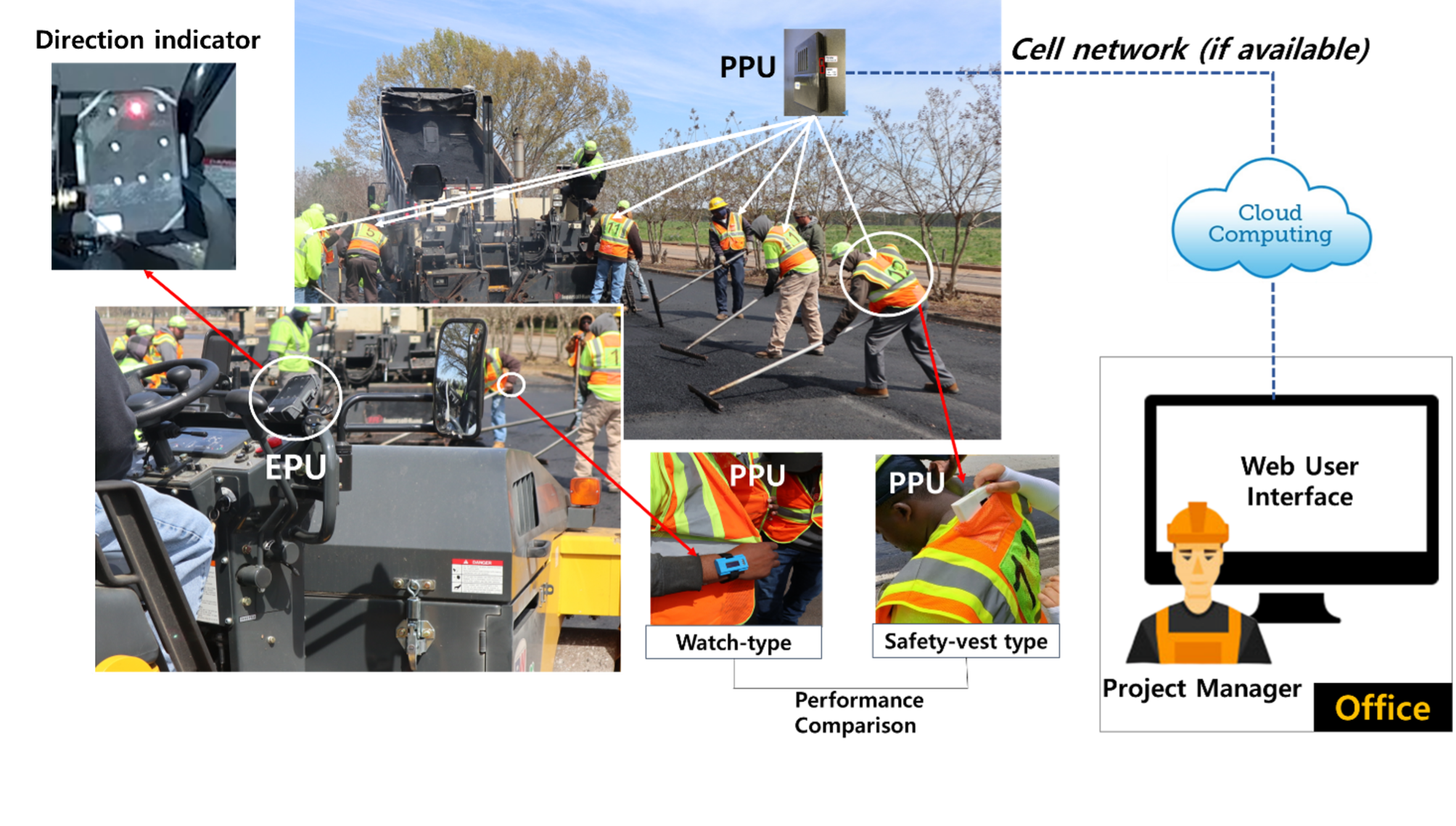
System architecture
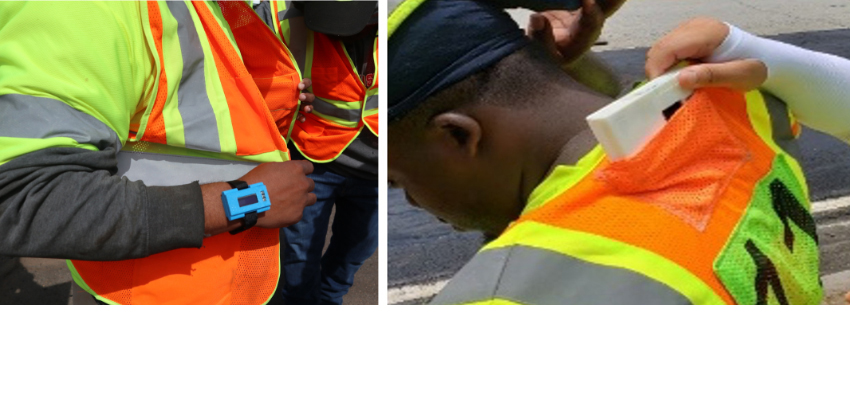
Watch-type PPU and vest-type PPU
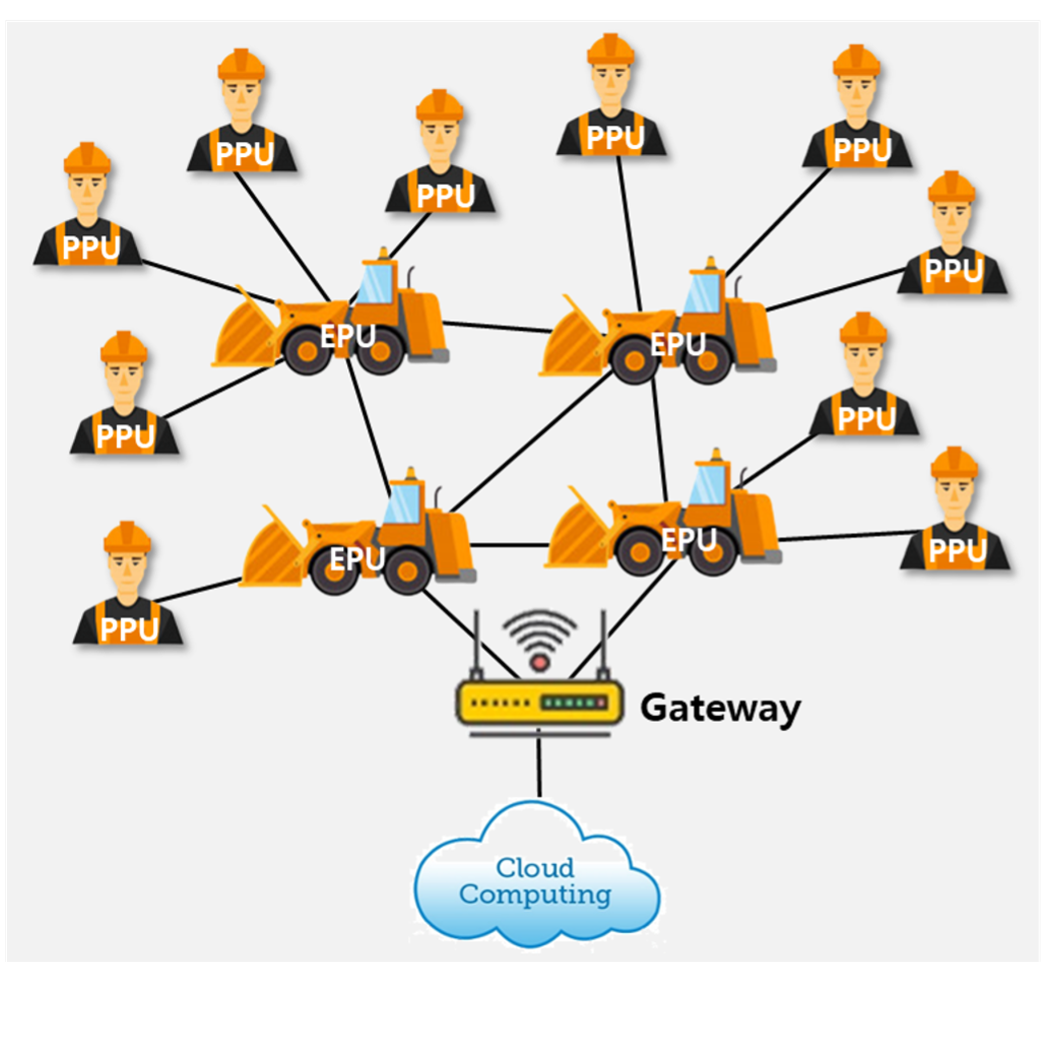
Mesh network communication
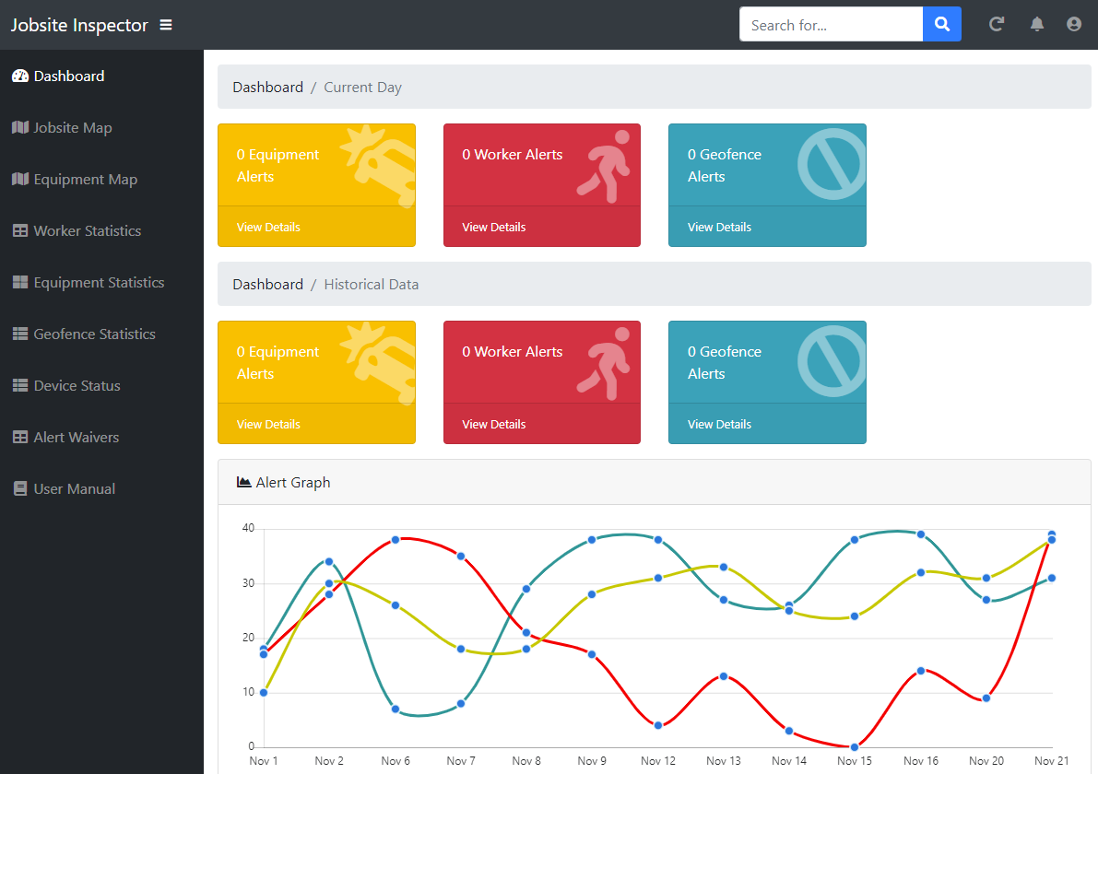
Web UI with statistical information
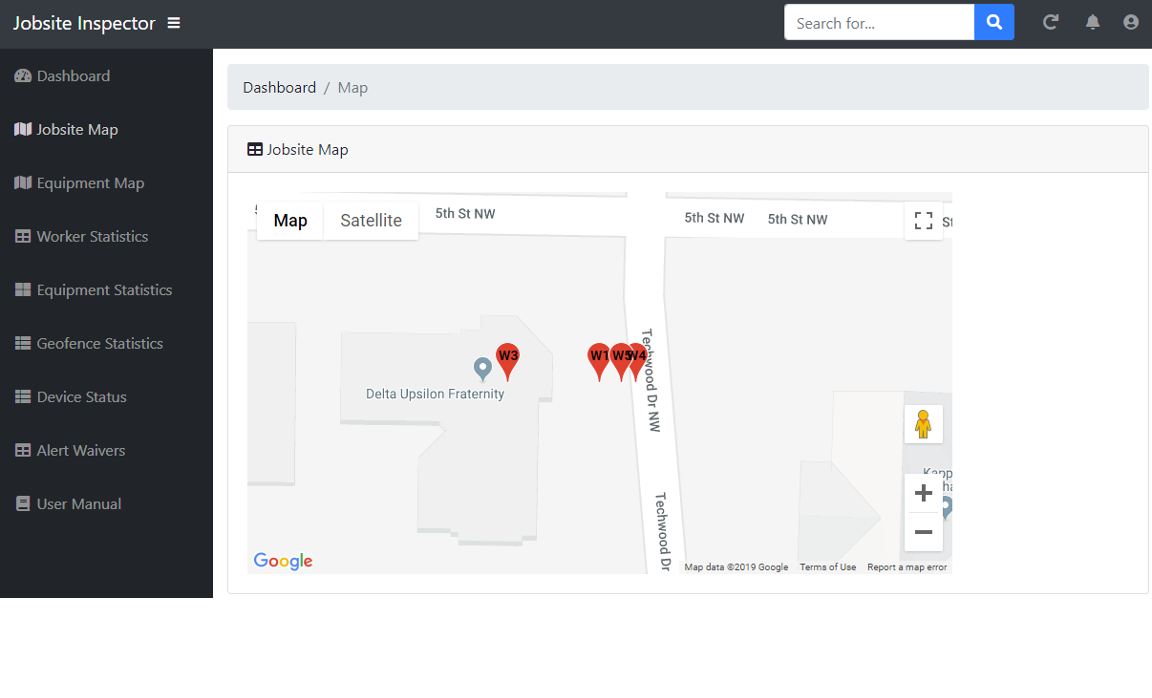
Web UI for worker location monitoring based on GPS data
